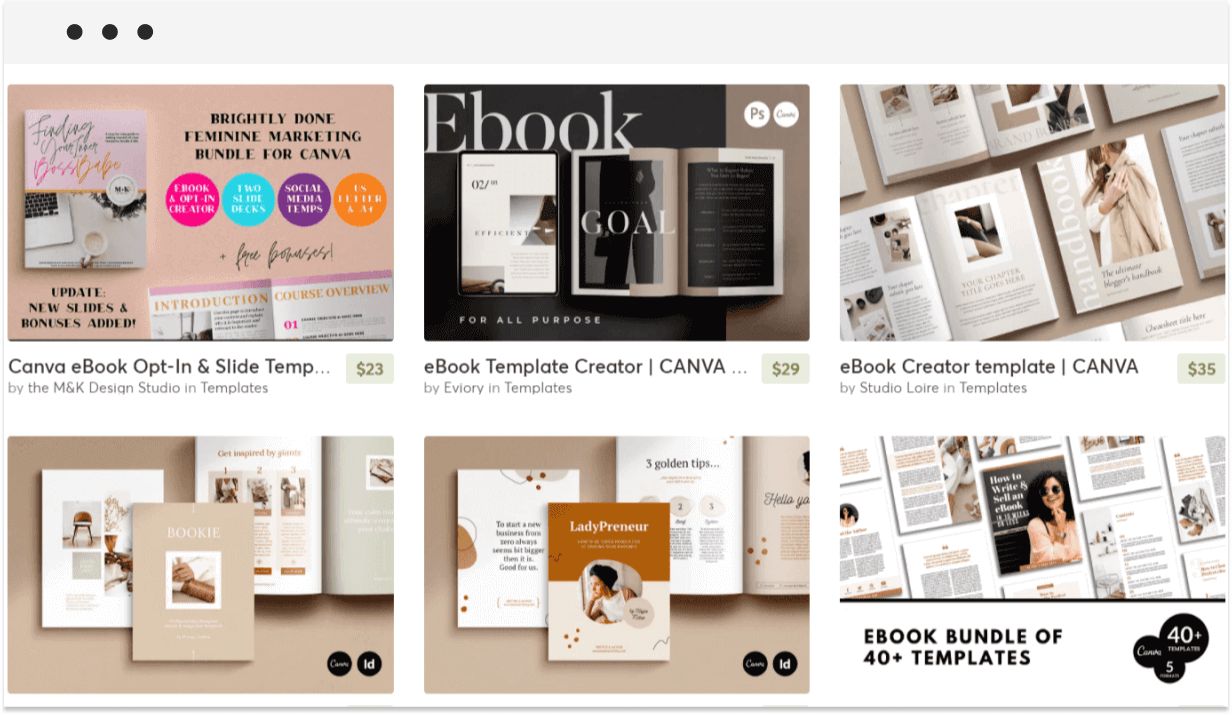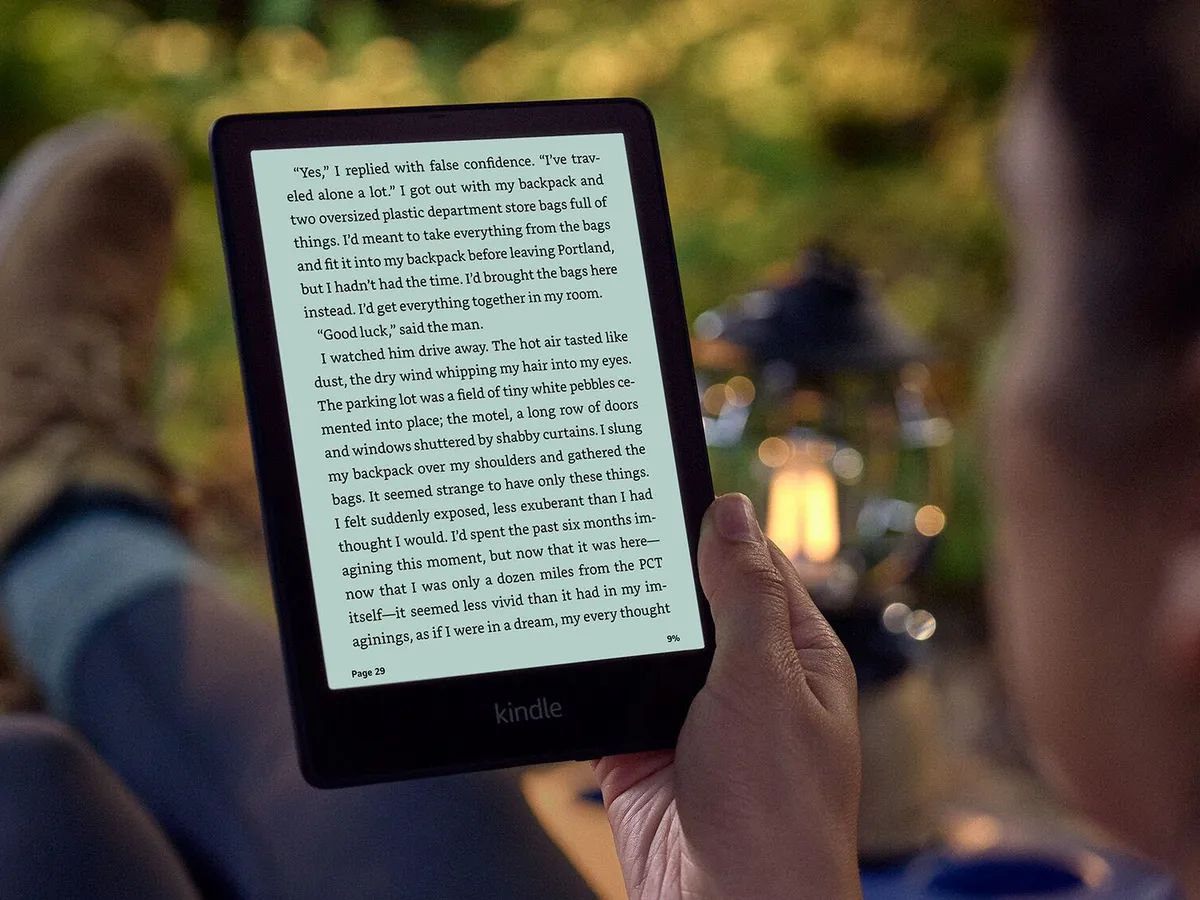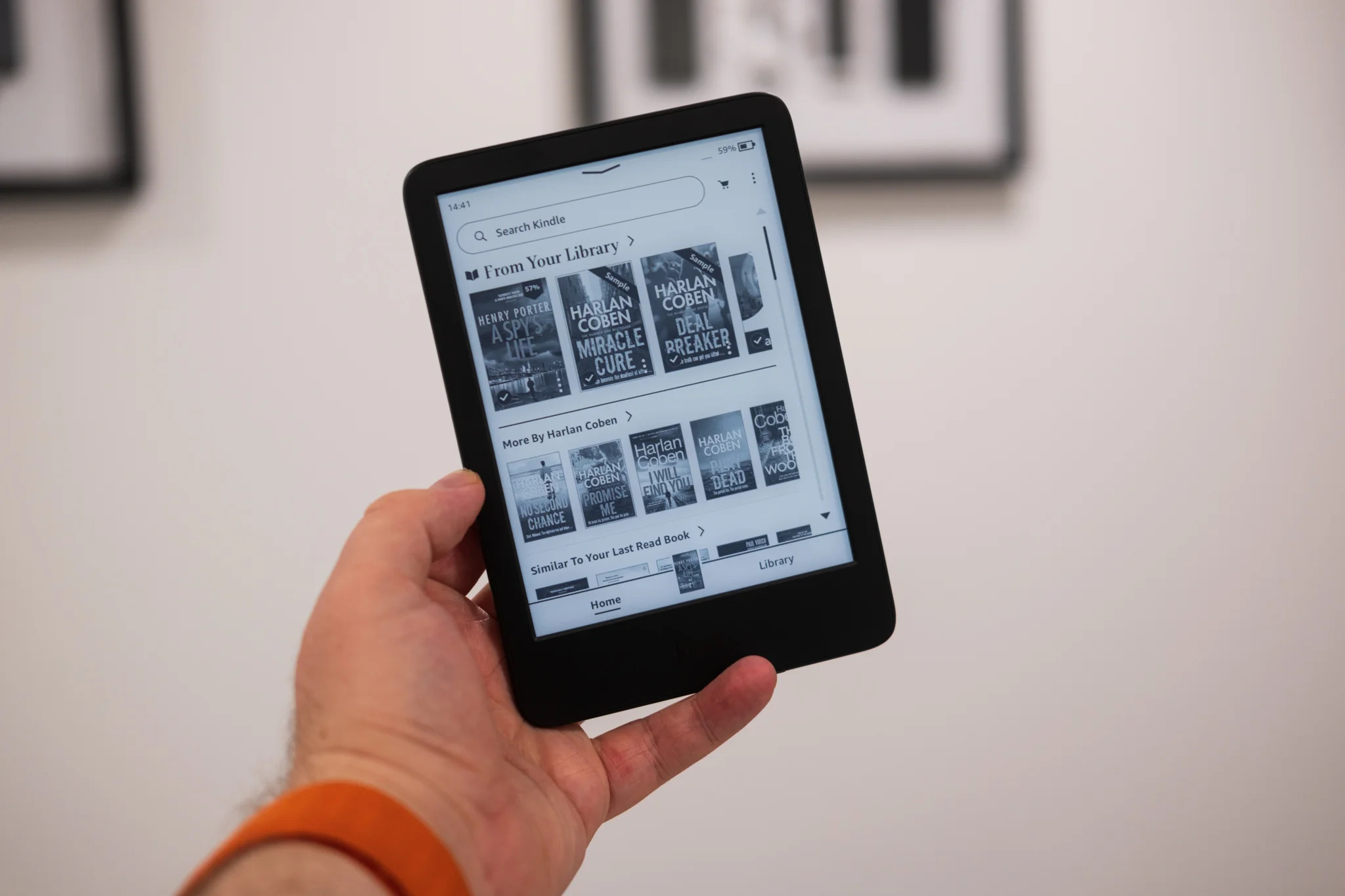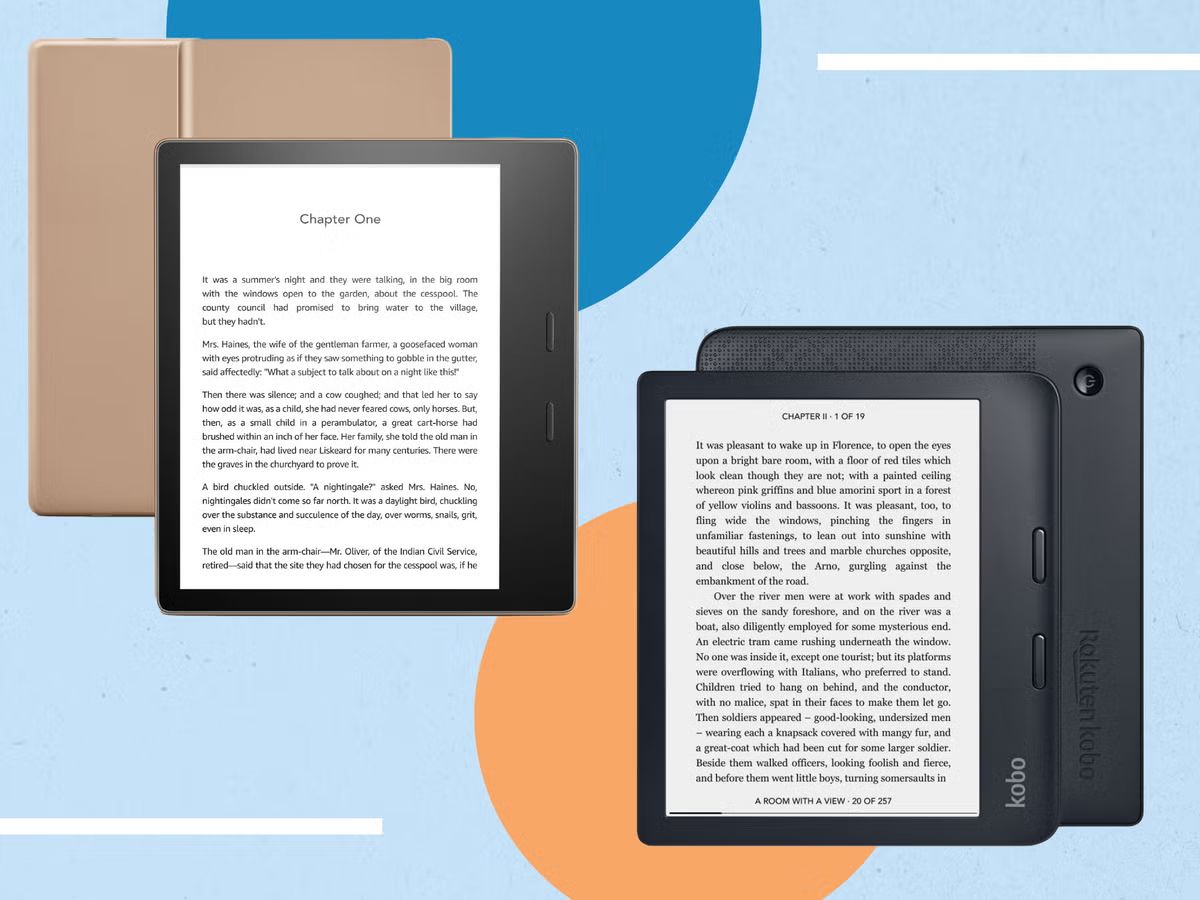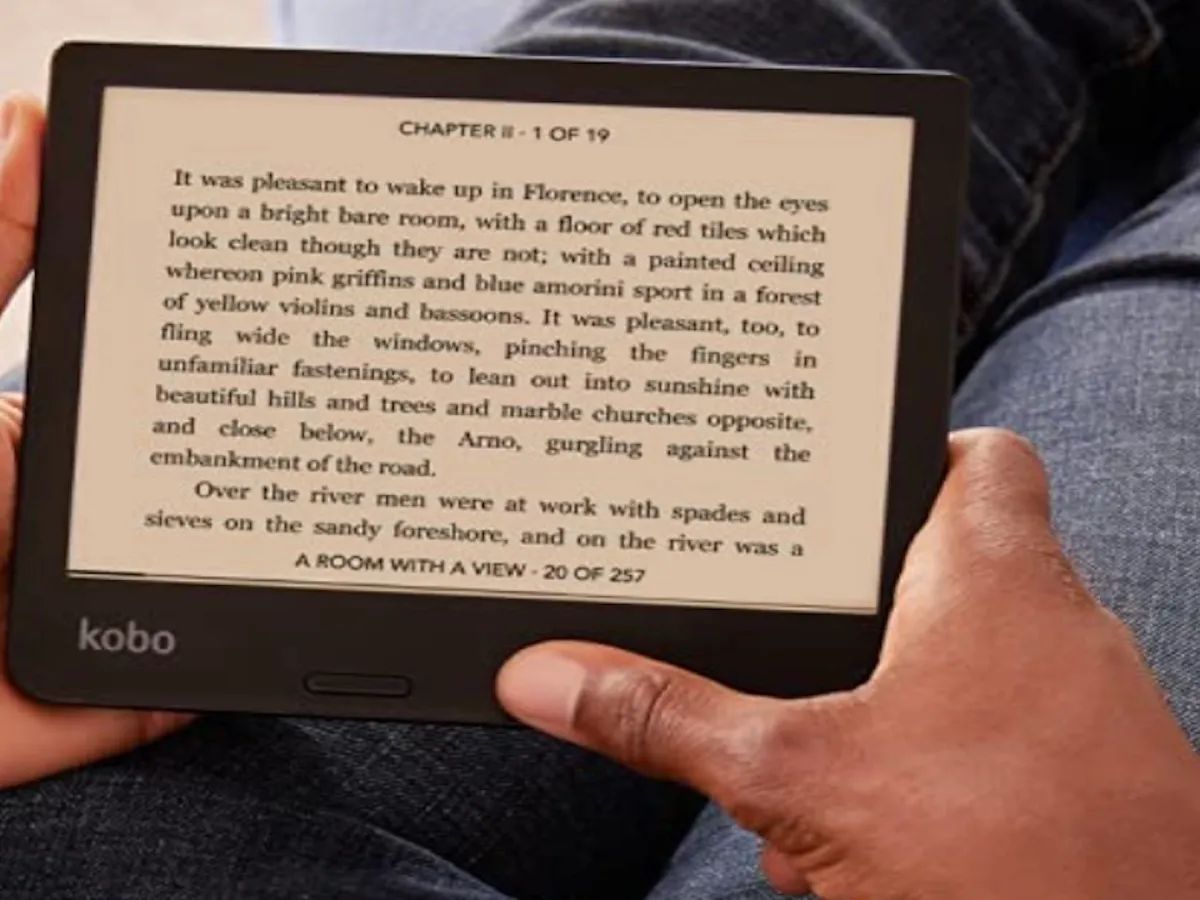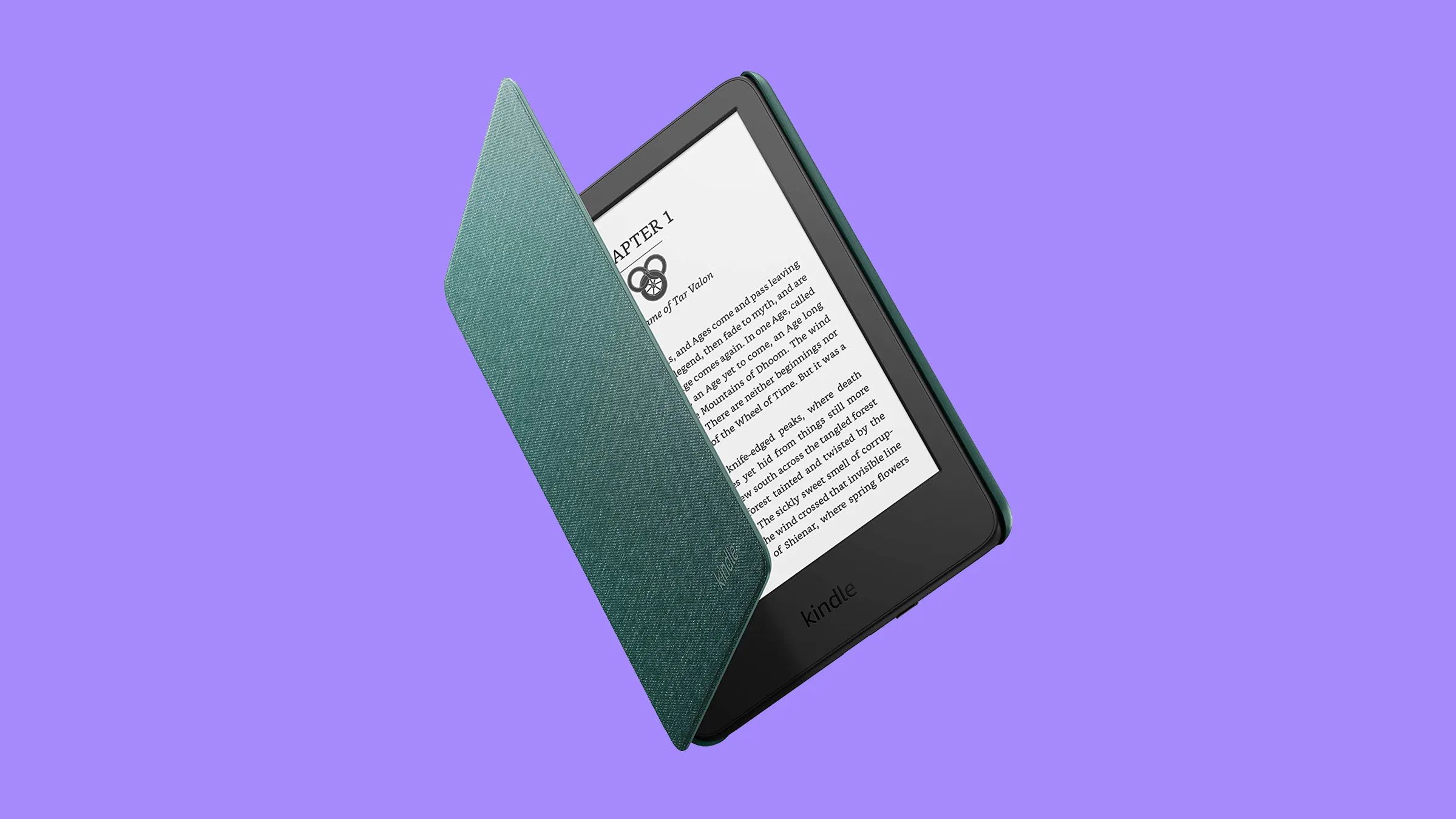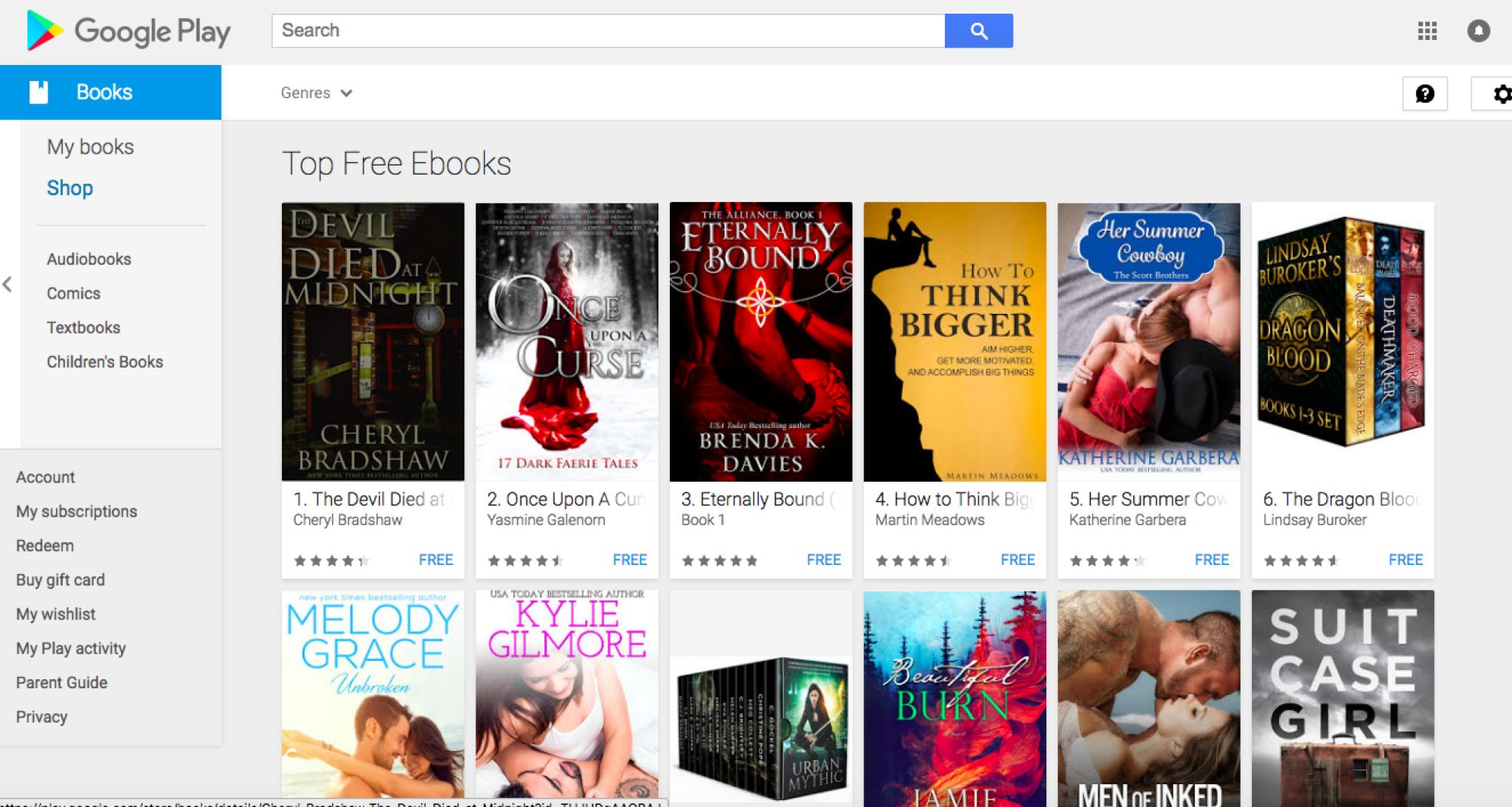Introduction:
Welcome to the digital era, where eBooks have taken the literary world by storm. With the rise in popularity of digital reading devices and platforms, more and more authors are turning to eBooks as a means of publishing and reaching a wider audience. However, one of the common questions that arises among both aspiring authors and avid readers is: how long does an eBook have to be?
While there is no one-size-fits-all answer to this question, eBook length can play a significant role in the success of a publication. A well-balanced and appropriate eBook length can impact reader engagement, satisfaction, and even sales. In this article, we will explore the factors to consider when determining eBook length, the differences between various genres, and how to find the sweet spot for the ideal eBook length.
With the increasing availability of self-publishing tools and platforms, authors now have more flexibility than ever to explore different lengths for their eBooks. Gone are the days when traditional publishing houses dictated strict word counts. Today, authors can embrace the freedom to experiment with shorter novellas, longer novels, or even series of eBooks.
Readers also have varying preferences when it comes to eBook length. Some may prefer shorter reads that can be consumed in one sitting, while others enjoy diving into epic sagas that span hundreds or even thousands of pages. Understanding your target audience and their expectations is crucial in determining the optimal length for your eBook.
In the following sections, we will delve into the factors that influence eBook length, explore the differences between fiction and non-fiction eBooks, discuss the distinction between novellas and novels, and examine the appropriate length for various genres. By the end of this article, you will have a better understanding of how to make informed decisions about the length of your eBook to maximize reader engagement and satisfaction.
Why eBook Length Matters:
Whether you’re a seasoned author or just starting out, understanding why eBook length matters is crucial in crafting a successful publication. The length of an eBook can affect reader expectations, engagement, and overall satisfaction. Here are a few reasons why eBook length should be taken into consideration:
- Reader Perception: eBook length can shape how readers perceive the value of the book. A very short eBook may be seen as lacking substance, while an excessively long eBook might intimidate readers. Striking the right balance is key to attracting and retaining readers.
- Completeness of Ideas: The length of an eBook should support the ideas and concepts presented within. Depending on the topic and genre, some ideas might need more space for thorough exploration, while others can be succinctly conveyed.
- Pacing and Flow: The length of an eBook affects the pacing and flow of the narrative or content. A shorter eBook might have a faster pace and focus on concise storytelling, while a longer eBook can allow for more detailed development and subplots.
- Time Commitment: Readers have varying amounts of time available for reading. A shorter eBook allows readers to finish the book quickly, providing a sense of accomplishment. Conversely, longer eBooks can provide a more immersive experience that readers can savor over an extended period.
- Genre Expectations: Different genres have different expectations when it comes to eBook length. For example, a mystery or thriller novel might benefit from a faster pace and be shorter in length, while a fantasy epic can be lengthier to fully explore its intricate world-building and plot.
It is essential to understand the target audience and genre expectations to strike the right balance. Analyzing reader feedback, market trends, and successful eBooks in your genre can provide valuable insights when determining the appropriate length for your eBook.
Remember, eBook length is not a strict rule, but rather a guideline to help ensure reader satisfaction. The main goal is to create a compelling and engaging reading experience that resonates with your audience. By considering the factors mentioned above, you can make informed decisions about the length of your eBook and increase its chances of capturing and retaining the attention of readers.
Factors to Consider When Determining eBook Length:
Deciding on the appropriate length for your eBook requires careful consideration of several factors. Here are some key factors to keep in mind when determining eBook length:
- Genre: Different genres have different expectations when it comes to eBook length. Researching successful eBooks in your genre can provide valuable insights into the average length readers expect. For example, a romance novel may typically be shorter compared to a historical fiction epic.
- Target Audience: Understanding your target audience is crucial in gauging their preferences and reading habits. Are they avid readers who enjoy diving into lengthy novels, or do they prefer shorter, quick-read eBooks? Knowing your audience allows you to tailor the length to their expectations.
- Subject Complexity: The complexity of your subject matter can influence the length of your eBook. If you are writing a non-fiction book that covers a vast topic in-depth, a longer eBook may be necessary to provide comprehensive information to your readers.
- Writing Style: Your writing style and narrative approach should also be taken into account. Some authors have a concise and efficient writing style that condenses ideas into shorter eBooks, while others may use more descriptive language and require more pages to fully develop their story or arguments.
- Story Structure: The structure of your story or content can influence the length of your eBook. If you have multiple subplots, complex character arcs, or extensive world-building, a longer eBook may be necessary to give these elements the attention they deserve. However, if your story or content is more straightforward and streamlined, a shorter eBook may be more appropriate.
- Reader Engagement: Keeping your readers engaged is crucial for a successful eBook. Consider how the length of your eBook may impact reader attention and interest. If your eBook is too long, readers may become bored or lose focus. On the other hand, if your eBook is too short, readers may feel unsatisfied or craving more content.
- Author Goals: Lastly, consider your own goals and intentions as an author. Are you aiming for a quick, easily consumable eBook to generate buzz and attract readers to a series? Or do you want to create a rich, immersive experience that readers can delve into for an extended period? Aligning your goals with the desired eBook length can help you achieve the desired outcome.
Keep in mind that finding the perfect eBook length is often a balancing act. Look for a length that accommodates reader expectations, fits the genre conventions, and serves the needs of your content or story. By considering these factors, you can make informed decisions that will resonate with your audience and enhance the overall reading experience.
Fiction eBooks:
Fiction eBooks encompass a wide range of genres, including romance, mystery, fantasy, science fiction, and more. The length of a fiction eBook depends on various factors, such as genre, target audience, and author preference. Let’s explore some considerations for determining the length of fiction eBooks:
Genre Expectations: Different genres have different expectations when it comes to eBook length. For example, romance novels tend to be shorter, usually ranging from 50,000 to 80,000 words, while epic fantasy novels can extend to over 100,000 words or more. Understanding the expectations of your genre can help you align your eBook length accordingly.
Story Complexity: The complexity of your story can also influence the length of your eBook. If your story has intricate plots, extensive world-building, and complex character arcs, a longer eBook may be needed to fully develop these elements and provide a satisfying reading experience. However, if your story is more straightforward and focused, a shorter eBook might be more appropriate.
Engagement and Pacing: Keeping readers engaged and maintaining a proper pacing is essential in fiction eBooks. Too much unnecessary detail or a dragged-out plot can bore readers, while rushing through important scenes can leave them wanting more. Striking a balance between engaging storytelling and a captivating pace can help determine the optimal length for your fiction eBook.
Target Audience: Understanding your target audience is vital in determining eBook length. Young adult novels, for example, often have shorter lengths, around 60,000 to 80,000 words, to accommodate younger readers’ attention spans. On the other hand, adult fiction novels can vary in length depending on the genre and reader preferences.
Series or Standalone: If you are planning a series of fiction eBooks, you may consider shorter lengths for each installment to keep readers eagerly anticipating the next release. However, if you opt for a standalone eBook, you have more flexibility to explore a longer length, as long as it serves the story and maintains reader interest.
Author Style: Your personal writing style and narrative approach can also influence the length of your fiction eBook. Some authors have a more concise and direct writing style, resulting in shorter eBooks, while others may employ a more descriptive and intricate style that requires a longer length to fully convey the story.
Ultimately, the length of your fiction eBook should be determined by a combination of genre expectations, story complexity, reader engagement, and your personal writing style. By considering these factors, you can strike the right balance and deliver a fiction eBook that resonates with your target audience and provides an enjoyable reading experience.
Non-Fiction eBooks:
Non-fiction eBooks cover a broad range of topics, including self-help, business, history, biographies, and more. The length of a non-fiction eBook can vary significantly depending on the subject matter, target audience, and the level of depth you wish to explore. Here are some factors to consider when determining the length of your non-fiction eBook:
Subject Complexity: The complexity of your non-fiction subject will influence the length of your eBook. If you are covering a complex or technical topic, a longer eBook may be required to provide in-depth explanations, examples, and analysis. On the other hand, if your subject matter is more straightforward and concise, a shorter eBook may suffice.
Reader Expectations: Understanding the expectations of your target audience is essential in determining the length of your non-fiction eBook. Readers seeking specific information or answers to their questions may prefer shorter eBooks that get straight to the point. Conversely, readers looking for a comprehensive exploration of a topic may expect a more detailed and extensive eBook.
Scope of Coverage: Consider the scope of your non-fiction eBook. Are you providing a general overview of a topic or delving into specific subtopics? A broader scope may require a longer eBook to cover all the relevant information, while a narrower focus may allow for a more concise length.
Visual Elements: Non-fiction eBooks often include visual elements such as charts, graphs, illustrations, and images. These elements can enhance the reader’s understanding and engagement. If your eBook contains numerous visual elements, it may contribute to its length, as you will need to consider formatting and ensuring proper presentation on various devices.
Practicality and Actionability: If your non-fiction eBook aims to provide practical advice or steps for readers to implement, consider the length required to deliver actionable content. Longer eBooks may allow for more in-depth guidance and examples, while shorter eBooks may focus on concise and actionable insights.
Author Expertise: Your level of expertise in the subject matter can also influence the length of your non-fiction eBook. Readers may expect a longer eBook from an expert in the field who can provide comprehensive insights and detailed analysis.
Reader Engagement: Keeping readers engaged is crucial, especially in non-fiction eBooks. Consider how the length of your eBook may impact reader attention. Balancing concise information with engaging narratives, stories, or case studies can help ensure that readers stay interested throughout the eBook.
Remember, there is no set formula for the length of a non-fiction eBook. It depends on the subject matter, the goals of the eBook, and the needs of the target audience. By considering factors such as subject complexity, reader expectations, and the scope of coverage, you can determine the appropriate length that provides valuable insights and engages your readers effectively.
Novella vs. Novel: What’s the Difference?
When it comes to fiction writing, the terms novella and novel are often used to describe different lengths of work. While novellas and novels share similarities, they have distinct characteristics that set them apart. Let’s explore the key differences between novellas and novels:
Length: The primary distinction between novellas and novels is their length. Novellas are shorter works of fiction typically ranging from 20,000 to 50,000 words. In contrast, novels are longer and can span from 50,000 words and beyond. The word count is a crucial factor in determining whether a work falls into the novella or novel category.
Story Complexity: Novellas often have a simpler narrative structure and focus on a single main plot or theme. Due to their shorter length, there is less room for extensive subplots or intricate world-building. Novellas tend to have a more concentrated focus and may explore a specific idea, character, or situation in depth.
Pacing: With their concise length, novellas tend to have a fast-paced and condensed narrative. The limited word count drives the story forward, resulting in a sense of urgency and efficiency. Novels, on the other hand, have more room for gradual development, allowing for slower pacing and more detailed exploration of the story’s elements.
Character Development: Novellas often focus on a small cast of characters and, due to their shorter length, may not provide as much opportunity for extensive character development or intricate backstories. Novels, with their larger word count, can delve into multiple character arcs and provide more intricate and nuanced development of their characters.
Time Commitment: Novellas can be read in a shorter amount of time compared to novels. Novellas offer a quick and immersive reading experience that can typically be consumed in one or two sittings. Novels, on the other hand, require a more significant time commitment from readers due to their longer length.
Genre Suitability: Novellas can be well-suited for certain genres, such as literary fiction, romance, or horror, where a shorter length can create a more intense and focused reading experience. Novels, on the other hand, span across various genres and allow for more expansive storytelling in genres like fantasy, historical fiction, or epic sagas.
Novellas and novels appeal to different readers and serve different purposes. Novellas offer a condensed and focused narrative experience, while novels provide a more expansive and immersive storytelling journey. Understanding the differences between novellas and novels can help authors choose the appropriate format for their story and cater to the expectations of their readers.
Short Stories and Anthologies:
Short stories and anthologies are distinct forms of fiction that offer readers a diverse collection of narratives within a single publication. Let’s explore the characteristics and differences between short stories and anthologies:
Length and Structure: Short stories are self-contained, standalone narratives that are typically brief and focused. They can range from a few hundred to a few thousand words. Short stories follow a traditional narrative structure, with a beginning, middle, and end, but they often focus on a single event, character, or theme. Anthologies, on the other hand, contain multiple short stories compiled into one larger collection. Each story within an anthology functions as a complete piece, but the collection as a whole offers readers a variety of narratives.
Plot and Character Development: Due to their shorter length, short stories often focus on a single event or moment, leading to a compressed plot. Therefore, character development tends to be concise, with nuanced characterization often achieved through minimal details. Anthologies, because they comprise multiple short stories, offer a broader range of plots and character arcs. The variety of stories within an anthology allows for a more diverse exploration of different themes, genres, and characters.
Time Commitment and Reading Experience: Short stories provide readers with an immersive and concise reading experience. They can be enjoyed in one sitting, making them perfect for those seeking a quick and impactful story. Anthologies, with their collection of short stories, offer readers the chance to delve into multiple narratives without the need to commit to a longer, single storyline. Readers can choose to read one story at a time or devour the entire anthology in larger chunks.
Genre and Theme Exploration: Both short stories and anthologies allow for the exploration of various genres and themes. Short stories provide a concentrated platform to delve deep into a specific genre or theme, creating a focused and impactful reading experience. Anthologies, on the other hand, offer a broader canvas, allowing readers to explore a range of genres, writing styles, and thematic elements within a single publication.
Flexibility for Authors and Readers: Short stories and anthologies offer unique opportunities for both authors and readers. For authors, short stories allow for experimentation, honing craft, and submitting to literary magazines. Anthologies provide a chance for authors to collaborate and gain exposure alongside other writers. For readers, short stories and anthologies offer opportunities to discover new authors, explore different genres, and enjoy diverse storytelling all in one volume.
Whether you prefer the brevity and impact of a standalone short story or the variety and exploration offered by an anthology, both forms of fiction provide unique and engaging reading experiences. Exploring short stories and anthologies allows readers to discover new voices and perspectives while giving authors an outlet for creativity and storytelling in a condensed format.
Children’s eBooks: How Many Pages?
When it comes to children’s eBooks, the number of pages plays a crucial role in determining the appropriate length for young readers. Children’s eBooks vary in length depending on the target age group, the type of story, and the inclusion of illustrations or interactive elements. Here are some considerations regarding the number of pages for children’s eBooks:
Age Group: The age of the intended audience is a key factor in determining the length of children’s eBooks. Board books and picture books for toddlers and preschoolers are often shorter, typically ranging from 10 to 32 pages. Early readers and chapter books for older children can have more pages, typically ranging from 50 to 150 pages, with more text and fewer illustrations.
Story Complexity: The complexity of the story and its themes should also be considered when determining the number of pages for a children’s eBook. Younger children may have shorter attention spans and may prefer simple, concise stories with engaging illustrations. Older children can handle longer stories with more intricate plotlines and character development.
Illustrations and Visual Appeal: Children’s eBooks often include illustrations or visual elements to enhance the reading experience. The presence of illustrations can impact the number of pages, as more pages may be required to accommodate the artwork. A balance between text and visuals is crucial in maintaining engagement and capturing the attention of young readers.
Reading Level: Consider the reading level and abilities of the target age group. Early readers and beginning readers may require shorter eBooks with larger font sizes and ample spacing between lines. As children advance in reading skills, longer eBooks with more complex vocabulary and sentence structure may be appropriate.
Interactive Elements: Some children’s eBooks incorporate interactive elements, such as games, quizzes, or touch-responsive features. These interactive elements can add to the overall page count and enhance the reader’s engagement and interactivity with the eBook.
Storytelling Format: The format of the storytelling can also impact the page count. eBooks that rely heavily on dialogue or rely on short, rhythmic sentences may have fewer pages. In contrast, descriptive narratives or eBooks with multiple plotlines may require more pages to adequately convey the story.
Remember, the number of pages in children’s eBooks should align with the target age group’s needs, attention span, and reading abilities. Striking a balance between text and illustrations, considering the complexity of the story, and keeping the readers engaged are essential in creating a successful children’s eBook.
eBook Length in Different Genres:
The optimal length of an eBook can vary across different genres, as reader expectations and preferences differ. Here’s an overview of eBook length in various genres:
Romance: Romance novels typically range from 80,000 to 100,000 words, providing ample space for compelling character development, intricate plotlines, and emotional depth. However, there are also shorter romance novellas, which can fall in the range of 20,000 to 50,000 words, offering a quicker and more focused romantic storyline.
Mystery/Thriller: Mystery and thriller novels are known for their fast pace and suspenseful storytelling. These novels typically fall into the range of 70,000 to 100,000 words, with shorter and more tightly plotted mysteries sometimes coming in around 50,000 words. The focus is on keeping readers engaged and on the edge of their seats throughout the story.
Fantasy/Science Fiction: Fantasy and science fiction novels often have larger word counts, ranging from 80,000 to 150,000 words or more. The genre’s immersive world-building and intricate plots necessitate a more extensive exploration of settings, characters, and complex storylines. However, novella-length works exist within these genres, exploring standalone or supplementary stories within the same fictional universe.
Historical Fiction: Historical fiction novels can vary in length depending on the specific historical period and the level of detail the author seeks to convey. Typically, these novels fall between 80,000 and 120,000 words, allowing for a balance between historical accuracy, character development, and engaging storytelling.
Young Adult: Young adult (YA) novels can range in length depending on the age group they target. Younger YA novels for middle-grade readers might fall within the range of 40,000 to 70,000 words. Older YA novels can reach lengths similar to adult novels, ranging from 70,000 to 100,000 words. However, story complexity and pacing remain crucial considerations for this genre.
Non-Fiction: Non-fiction eBooks can vary significantly in length depending on the topic, target audience, and level of detail. Practical self-help or instructional books often fall into the range of 30,000 to 50,000 words, offering concise and actionable advice. In contrast, in-depth biographies, historical analyses, or academic works can extend beyond 80,000 words, providing a comprehensive exploration of the subject matter.
Children’s Books: The length of children’s eBooks varies greatly depending on the age group and the type of book. Board books or picture books for younger children are often shorter, ranging from 10 to 32 pages. Early readers and chapter books for older children typically have more pages, ranging from 50 to 150 pages, with varying word counts based on reading level.
Keep in mind that these are general ranges, and there can be exceptions within each genre. Reader expectations, the specific story’s requirements, and other factors should also be considered when determining the optimal length for an eBook in any given genre.
Finding the Sweet Spot: The Ideal eBook Length
While there is no definitive answer to what constitutes the ideal eBook length, finding the sweet spot involves considering several factors and striking a balance. Here are some tips to help you determine the ideal length for your eBook:
Consider Genre and Reader Expectations: Research eBooks in your chosen genre to get a sense of reader expectations regarding length. Genres often have established conventions that readers anticipate, and deviating too far from these conventions may impact reader satisfaction.
Define the Purpose and Scope: Clarify the purpose and scope of your eBook. Are you aiming to provide a concise guide, a comprehensive exploration of a topic, or an entertaining story? Understanding your goals will guide you in determining the appropriate length.
Avoid Padding or Fluff: Avoid padding your eBook with unnecessary content or filler to meet a specific word count. Readers appreciate concise and engaging writing. Quality and relevance trump quantity. Focus on delivering value and maintaining reader interest.
Consider Reader Engagement and Attention Span: Consider the attention span and reading preferences of your target audience. Shorter eBooks may be more appealing to readers seeking quick reads, while longer eBooks can offer more in-depth exploration for readers craving immersive experiences.
Balance Complexity and Simplicity: Align the length of your eBook with the complexity of your subject matter or story. Complex topics may require more pages to adequately cover, while simpler narratives might benefit from more concise lengths. Finding the right balance ensures that you provide the necessary depth without overwhelming or leaving readers wanting for more.
Test and Gather Feedback: Once you have a draft of your eBook, consider sharing it with beta readers or soliciting feedback from your target audience. Their input can provide valuable insights on pacing, engagement, and whether the length feels appropriate for the content.
Aim for Quality and Impact: Ultimately, the most important aspect of determining eBook length is to focus on creating a high-quality, impactful reading experience. Whether your eBook is short or long, it should satisfy readers by delivering compelling content, engaging storytelling, and a seamless reading flow.
Keep in mind that flexibility exists within eBook length. The ideal length can vary depending on several factors, including genre, story complexity, target audience, and reader expectations. By considering these factors and aiming for a balance between engagement, quality, and purpose, you can find the sweet spot that will resonate with your readers and maximize the impact of your eBook.
Conclusion:
When it comes to determining the ideal length for an eBook, there is no one-size-fits-all answer. The length will depend on the genre, target audience, subject matter, and the goals of the author. Taking into consideration factors such as reader expectations, story complexity, pacing, and engagement is crucial in finding the sweet spot for your eBook length.
Genres have different conventions, and understanding these expectations can guide your decision-making process. Additionally, considering the age group and reading abilities of your target audience is vital in creating a satisfying reading experience. While some genres may have preferred word count ranges, it is important to remember that every story is unique, and breaking away from conventions can sometimes lead to innovative and successful results.
Striking a balance between brevity and depth is a key aspect of finding the ideal eBook length. Avoiding unnecessary padding, focusing on quality content, and maintaining reader engagement are essential considerations. The length should support the story or subject matter, providing enough room for development and exploration, but without overwhelming readers with unnecessary or verbose content.
As an author, testing and gathering feedback can aid in refining the length of your eBook. Beta readers and your target audience can provide valuable insights on the pacing and engagement of your story or content. Their feedback can help you determine if the length feels appropriate and if any adjustments should be made.
Ultimately, the goal is to deliver a high-quality eBook that resonates with readers and keeps them captivated throughout the reading experience. By taking into account the factors discussed in this article and aligning your length with the genre, story complexity, and reader expectations, you can craft an eBook that leaves a lasting impact.
Remember, eBook length should not be seen as a rigid rule, but rather as a flexible guideline. What truly matters is the quality of the content you provide and the enjoyment and satisfaction it brings to your readers.







